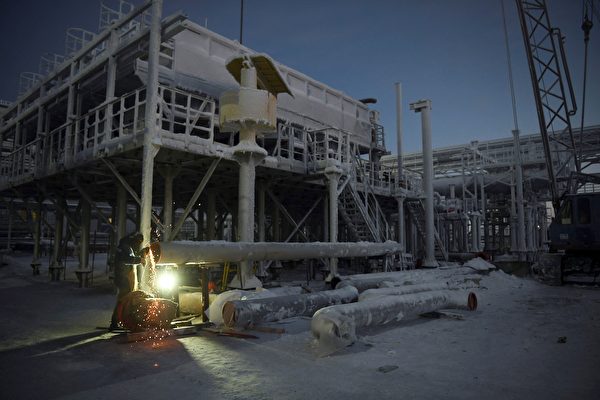As the climate warms, ice melts, and sea routes open up, the strategic importance of the Arctic region is increasing day by day. On Monday (July 22), the Pentagon released its latest strategic document to curb the expansion ambitions of China and Russia in the region.
The 28-page new document titled “2024 Arctic Strategy” states that “the Arctic region holds significant strategic importance for the United States” and warns that Moscow and Beijing are increasingly collaborating to expand their influence activities in the Arctic region, especially after Russia’s invasion of Ukraine.
The new document notes, “China and Russia are using various national power means to increasingly engage in cooperation in the Arctic region.”
“Russia’s comprehensive invasion of Ukraine has left it isolated, making it increasingly dependent on China for financing its energy export infrastructure in the Arctic region. More than 80% of Russia’s natural gas production and nearly 20% of its oil production come from the Arctic region, and Russia is turning more towards China to exploit and sell these resources.”
The document mentions the increasing military cooperation between Russia and China in the Arctic region, especially joint training and exercises conducted by Beijing and Moscow near the Alaskan coast, close to the United States.
Canada, the United States, and five other NATO member countries – Denmark, Finland, Iceland, Sweden, and Norway – as well as Russia are all members of the Arctic Council.
The Pentagon states that while NATO members occupy seven of the eight Arctic countries, Russia holds the largest territorial share and developed military capabilities in the region. Russia continues to invest heavily in the Arctic region and renovate its facilities.
Russia has more than 40 icebreakers and plans to build more, aiming to put 13 heavy icebreakers into operation by 2035. In contrast, the United States Coast Guard operates only two icebreakers, which are expected to be decommissioned soon.
China has three dual-use military and civilian icebreakers, although it is not an Arctic country. However, China frequently conducts research activities related to military purposes there. China is trying to promote the Arctic as a shared space and seeks access to the region through investments.
According to the Congressional Hill, at the press conference on that day, Deputy Secretary of Defense Kathleen Hicks said that China and Russia’s activities in the Arctic region are “very noticeable and worrisome.”
Hicks said, “The United States is an Arctic nation. The region is crucial for defending US territory, maintaining US national sovereignty, and fulfilling defense treaty commitments. This new Arctic strategy is an important step to ensure stability and security in the Arctic region now and in the future.”
The new strategy outlines measures the Department of Defense will take, including investing in more icebreakers, training troops for Arctic missions, infrastructure improvements, and developing advanced technologies for Arctic operations, such as aircraft and communication infrastructure. Through these measures, the Department of Defense will work with allies and partners to ensure security and stability in the Arctic region.
The focus of the US Defense Department’s plan is to enhance Arctic capabilities of joint forces through investing in sensors, intelligence, and information-sharing capabilities; strengthen comprehensive deterrence and collective defense with allies and partners; conduct more individual and joint training and exercises in the Arctic region to prepare for operations in high latitude areas.
The new strategy also points out that NATO’s newest member countries – Sweden and Finland – are also Arctic nations with rich operational experience in the region. Their icebreakers can ensure traffic flow in their ports. NATO’s enlargement and enhanced Nordic defense cooperation will create new opportunities for joint planning, information exchange, and exercises to expand regional cooperation.
During the NATO summit earlier this month, US President Joe Biden, Canadian Prime Minister Justin Trudeau, and Finnish President Alexander Stubb signed a billion-dollar trilateral icebreaker collaboration agreement, known as the “ICE Pact,” committing the three countries to collaborate in building heavy icebreakers more efficiently, rapidly, and cost-effectively.
This is the first update on the Defense Department’s policy in the region since 2019. The strategy, guided by the “National Security Strategy 2022” and the “Defense Strategy 2022,” is part of the Defense Department’s efforts to implement the “Arctic Strategy 2022.”

